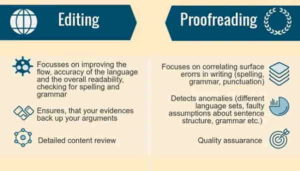How Investing In Business Intelligence Tools Can Take Your Business to the Next Level
When it comes to business strategy decisions, data is your compass. Those who do not take their data seriously, instead relying on “winging it” in any aspect of business, essentially run a much higher risk of making bad decisions.
That’s not to say that consulting your analytics before making your decisions is an error-free, cut-and-dry process. But with so many relevant information signals available to you, it only makes sense to make order of them and use them to educate yourself when formulating your strategies.
So just how can business intelligence (BI) tools, the software services that help turn business data into insights, tangibly help a business? In a nutshell, they allow executives to maintain a well-rounded picture of all processes taking place in the company, using powerful dashboards and reports that can be understood at a glance.
By drilling down into these interfaces, executive leaders can identify inefficiencies and optimize workflows for maximum output – both in terms of volume and quality. You can maintain a competitive edge over other companies operating in your industry, ensure that your employees are engaged and happy, and keep your customers delighted and loyal.
Indeed, the benefits of business intelligence are diverse. You can click here for an impressive array of examples. You can also read on to learn more about why BI tools are such potent game changers.

The power of large data pools
Business intelligence platforms often involve the pooling of large data sets and analyzing them to provide the user with information on what decisions to make, and sometimes when to make them. The idea is to import, prepare, map and merge this data at rates that are far faster than it would be possible for a human to do, and at volumes far beyond standard spreadsheet capability.
Not only do they pool this data so efficiently, but they do so at a far higher quality than us mere mortal, error-prone humans can do.
This level of insight can provide the user with easy to understand overviews on why your business is performing in a certain way, often using visual tools such as interactive, segmented charts and graphs. While machines are more than happy dealing with numbers all day long, most of us tend to be visual creatures, and as such, seeing the information displayed as a graphic in one way or another is often a far better way to interpret the data that an endless stream of digits.
Just how can this help you run a business? Better insight means better planning, and more informed decision making. Business intelligence tools allow you to identify problem areas, or areas of inefficiency, and react accordingly – before issues get out of hand.
Not only is it important to identify areas that might need improving, but it is also important to see which areas should be prioritized. Some business intelligence tools can do just that, showing the user which problem areas are impacting the company at higher levels, allowing you to decide which area to address first, before polishing those smaller problem areas at a later date.
Machine learning is the key
Depending on which service you use, you may find that your data analysis is being heavily moulded by AI, in the form of machine learning. Many of these BI tools utilize forms of machine learning to point the user in the direction of significant projected trends.
The great thing about services like this, is that like all aspects of machine learning, they get better the more you use them. The larger the data pool that BI tools have to play with, the more accurate they get at predicting the coming trends.
Go back a decade or so, and garnering this sort of data, and placing it into a form that is usable would require help from the IT department, and a lot of time and effort. One of the biggest boons when it comes to BI tools is that they are generally aimed at business users who don’t have an in-depth knowledge of the IT systems and their respective back ends.
Being user-friendly is part of the appeal for modern BI tool users, and as such most companies have made sure that collating the data you need is as simple as possible, pulling data from your already in place services such as your web analytics platform or even your CRM.
Educate your intuition
With so many options out there to choose from, those looking to harness the power of raw data really have no reason not to employ the use of BI tools to some degree.
Yes, there is still room for intuition in some areas of business, but machine learning and the use of data at this level is not to be sniffed at. In fact, those who rely heavily on their own intuition should probably be feeling that any extra arrow in the quiver is a good thing when it comes down to making decisions about your business. And the more successful you are, the more likely you are to need some serious solutions to data analysis if you wish to continue on that trajectory.







